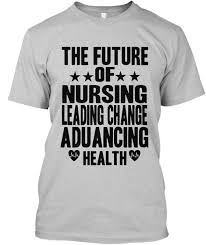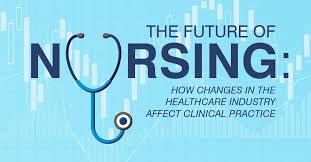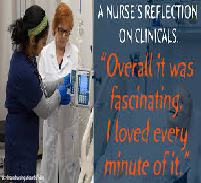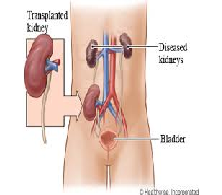Impact of Nursing Leadership on Performance Order Instructions: Use the topic area I choose in the last assessment(the last assignment I was ordered here also, I will attach the order number of the last assignment in the order page together with the details of instruction), to prepare a literature review paper.
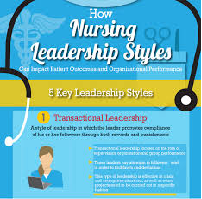
the literature review should adhere to the following structure and utilize essential readings and information from the learning modules for guidance.
Impact of Nursing Leadership on Performance Sample Answer
Impact of nursing leadership on the performance of nurses
Name
Course code
Institution
Abstract
Creating conducive working environments for nurses will require fundamental changes throughout the nursing units – in the manner personnel get deployed, work is designed and the culture of the healthcare organizations understanding of patient safety. These changes demand a type of leadership that has the capacity of transforming not only the physical environments but also the nurses’ practices and beliefs when delivering care. This paper aims to critically assess the nursing leadership- transformational leadership and the barriers faced in implementing this type of leadership. This paper evaluates the various ways nurse leaders dispense their leadership and its impacts on nurse performance. This paper consists of five major sections; the introduction which will introduce the research topic; method chapter which is a brief methodology of research metrics applied. The literature review chapter will critically evaluate available literature on the impact of transformational leadership on nurse performances. The Discussion chapter shed lights on the evidence based practice, which will be summarized in the conclusion chapter.
Impact of Nursing Leadership on Performance Introduction
Leadership is one great essential component in most aspects of a nurse role. However, this aspect is not considered as essential as other areas of nursing such as the clinical skills. Today’s health care environment is fast changing and uncertain which makes it important for effective nurse leadership skills (Malloy & Penprase, 2010; Giddens & Morton, 2010). Research indicates that competent leaders influence their work environments positively, improve the patient safety and the quality outcomes of the organizations. Therefore, healthcare organizations are advised to continue to develop and support leadership training in order to maintain and to promote its development in practice. When leadership competencies are effectively taught and integrated in nursing practice, it positively impacts the leadership skills as well as their practices (Crosby & Shields, 2010)
Research indicates that nursing practice is bureaucratic. Therefore, it is very important for nurses to be equipped with leadership skills. These skills are enhanced by the leadership styles in their nursing unit. Nurse leaders who follow transformational leadership style have the capacity to identify the needed changes, and have the capacity to integrate change by inspiring the team members and establishing an environment that creates some sense of commitment (Rudisill & Thompson, 2012). Such type of nurse leaders feels more confident and comfortable when interacting with their follower; which is associated with positive outcomes. Therefore, it is important that in the nursing realm, the nurse leaders should apply this type of leadership so as to grow the skills sets necessary for future nurse leaders. However, the impending lack of transformational nurse leaders within the nursing unit and healthcare overall is a proportionately critical concern is yet to receive much attention. In this context, this paper provides insights on the importance of developing leaders in academic and clinical arenas is important for nursing professions, and it mandates critical awareness (Hutchinson & Jackson, 2013).
Impact of Nursing Leadership on Performance Methodology
The research methodology used in this paper is a systematic literature review. To obtain the appropriate research literature for this literature review study, papers were searched from peer-reviewed databases. The peer reviewed articles in this study were those with recent studies. Although finding recent publications was a challenge, the use of the available search engines revealed many nursing leadership studies published recently. The studies provided an effective comprehensive pool of information, which helped in compiling the literature review.
The key words applied during the study search were ‘leadership,’ ‘nursing,’ and ‘practice.’ In most of the paper, these words were used together and in a particular order. The database used included the Ebschost, ProQuest website, and Cochrane. The Google Scholar and Google search engine were very instrumental for this study. The other websites that were used were the Canadian Nurses Association (CAN), American Nurse Today website, the nursing world organization and the American Nurses Association (ANA).
Approximately half of the sources used in this paper were obtained from the Google Scholar. The rest of the papers were from the electronic nursing journals mainly from healthcare facilities that operated within the American healthcare sector. The variation of the sources used was done in order to obtain information from diversified institutions, in order to make the information gathered to be evidence based practice, and to be relevant in similar healthcare settings in the USA and the world (Malloy & Penprase, 2010; Giddens & Morton, 2010).
Impact of Nursing Leadership on Performance Literature review
In healthcare, leadership is defined as “ the process of engaged decision making linked with actions taken in the complex face, uncharted and perilous circumstances in clinical scenario’s that have no standardized solutions” (Curtis, De Vries, & Sheerin, 2011). Creating conducive working environments for nurses will require fundamental changes throughout the nursing units – in the manner personnel get deployed, work is designed and the culture of the healthcare organizations understanding of patient safety. These changes demand a type of leadership that has the capacity of transforming not only the physical environments but also the nurses’ practices and beliefs when delivering care (Kouzes & Posner, 2012).
The characteristics of an effective leader includes being visionary leaders, leaders who are equipped with effective strategies and plan as well as a desire to direct their teams to meet future goals. The leaders should be adequately equipped with problem solving skills in order to effectively develop nurses self esteem and group identification. The leaders should also be dynamic, motivational and passionate to their followers (Malloy & Penprase, 2010; Giddens & Morton, 2010). Transformational leadership styles apply these characteristics to their work, which enables them to win respect and trust of the team members. Evidence based practice indicates that applying these characteristics to their work enables the nurses to be in a position to influence the development of each other, and in ensuring that professional standards and code of ethics are maintained. Transformational leaders are the source of inspiration and role models for nurses (Malloy & Penprase, 2010).
Research work on behavioral work force effectiveness and health services as well as the organizational disasters identify few management practices associated with successful implementation of initiatives of safety (Frazzini & Fink, 2011).. These includes practices such as a) balancing the organization tension that exist between reliability and efficiency, b) creation as well as maintaining trust in the organization, c) active management of change processes, d) integration of employees in decision making that pertains to work design and work flow, and e) use of management knowledge to establish a “ learning organization.” These practices are very essential in maintaining nurses and a patient environment conducive. Evidence based research indicates that to fully secure these five management practices, the transformational leadership are needed (Gillam & Siriwardena, 2013).
The transformational leadership theory was first developed in 1978 by James McGregor Burns. The theory was developed with the aim of addressing the components that lead success in an organization, and identification of strategies that will improve employee’s commitment and enthusiasm in their work place. This style of leadership works by identifying the employee’s values at their work place. According to evidence based studies, the transformational leadership styles works by inspiring the employees to discover their purpose and meaning in relation to their work, which improves employee’s growth and maturity (Malloy & Penprase, 2010).
Research indicates that staffing problems arise due to a poor delegation of skills and poor response by the leaders to address to clinical economic factors and patient demographics, which ultimately affects the organizations goals. The ultimate of any healthcare organization is to influence the quality of care. This is achieved through effective nursing leadership. Transformational leadership helps the leader influence the nurses to gain a better understanding of patient needs and values, which in turn increases patient satisfaction (Malloy & Penprase, 2010; Giddens & Morton, 2010). Research indicates that empowered nurses often are eager to implement evidence based practice because they tend to be highly motivated and well informed. This kind of leadership enables the nurses to be committed to better patient’s outcome by promoting staff ability and competence, which in turn increases nurse expertise. Hospital environment have a significant effect on patient outcomes. Therefore, the nurse leaders should encourage the nurses to seek maximum and minimum standards in order to achieve and maintain high quality benchmarks (Raes et al. 2013).
The central function of leadership is attaining the organization’s collective purpose. Leadership is observed as the essential precursor of attaining safety in most of the industries, which is a critical factor in ensuring the success of most change initiatives and in sustaining the organization competitiveness. A study conducted in the USA on healthcare facility reengineering initiatives for a period of one year (1996-1997), indicated that the type of leadership in any healthcare organization is influenced by the type of leadership, and also determines the organization’s productivity, organizational commitment, job satisfaction and retention (Malloy & Penprase, 2010; Giddens & Morton, 2010).)
Pulitzer Prize- winning study on leadership outlined the essential characteristics of leadership. In his study, James Burns’s distinguished transactional leadership from transformational leadership by stressing that leadership in the organization is based on the relationship between the leader and his followers. In contrast, to exercise of power, effective leadership is one that has the capacity to identify and to respond to the needs and goals of the leader and his/her team members (Nadeem et al. 2013). Therefore, it is effectively exercised by integrating the followers during the decision making which in turn motivates them to work towards achieving their specific goals which represent the motivations, values and organizations expectations. According to Burn, the genius of leadership depends on the manner in which the leaders see his/her follower’s values and motivations, and in satisfying the follower’s values (Paterson, Henderson, & Trivella, 2010).
Transformational leaders are very effective when they generate visions that enables them to gain trust and convince their followers to make the necessary action. This involves listening to the followers concerns in order to deal with objections. However, this type of leadership can be ineffective if it is not properly followed. For instance, there are risks on improper use of influence by the leaders (Spinelli, 2006; George & Lovering, 2013). This is because transformational leaders act as role models to their respective followers. Therefore, if the leaders are involved in unethical behaviors, the entire organization suffers. The other drawbacks associated with transformational type of leadership includes risks of following wrong decisions especially in cases where leaders makes harsh decisions out of emotions. Recent study associated the transformational type of leadership with employee burnout. This is because when the employees are inspired to attain the organization goals, they tend to overwork themselves in order to achieve the organization’s goals. Consequently, they tend to become dissatisfied (Heuston & Wolf, 2011).
Despite the demerits, research indicates that transformational leadership is the most effective type of leadership in the nursing unit. This is because it helps establish organized environment by building a cohesive team and in setting a common goal. However, several barriers of the transformational type of leadership have been established. These include lack of teamwork and change resistance by some of the team members. Some of the followers feeling that the leaders assign the subordinates too much work and tends to become too personal with them. Evidence based practice indicates a positive correlation between job satisfaction and transformational type of leadership (Pieterse & Schippers, 2010)
Work attitudes strongly influence the quality of nurse’s profession lives. Research indicates that job satisfaction and the organization commitment are the variables that determine the nurse work attitudes. Leadership, especially the transformational type of leadership is associated with increased levels of satisfaction. Therefore, use of transformational leadership helps improve the employee’s psychological wellbeing and jobs satisfaction. This is because the higher the support from the nurse leaders and supervisors the higher the levels of job satisfaction, which correlates to increased organizational commitment. This is associated with reduced incidences of general health well being (Cathcart, Greenspan, & Quin, 2010)
Impact of Nursing Leadership on Performance Discussion
Evidently, there is recognition in the healthcare arena of the need of transformational nurse leaders. This is constitutes the Institute of Medicine report, the future of Nursing: Leading change. This report focuses on the importance of nurse leaders in clinical settings. The healthcare system in the world is dynamic and is increasingly becoming complex. The American Nurse Association (ANA) continues to emphasize on the need for nurses to play a proactive role of leadership in their healthcare set up, local and state level (Fennimore & Wolf, 2011). Research indicates that the nature of the country’s healthcare system requires the nurse managers to apply transformational leadership style. This leadership styles is supported by the evidence based practice in that it facilitates the identification of areas that need change, and it guides change by inspiring their team and establishing a sense of commitment. The qualities of the transformational type of nurse leadership allows the nurse managers to become confident and comfortable of their practices, especially when engaging in healthcare developmental policies, the dynamic aspects of healthcare technology and mentorship of young leaders (Sanford, 2011).
Nurse leadership primarily is about making decisions, deligating duties, acting with the utmost integrity and resolving of conflicts. The role involves nurturing the other nurses so that they can understand the patients. These functions are the core elements that are necessary in connecting nurse leadership with effective development of the other members (Fennimore & Wolf, 2011). This is attained by working alongside the nurses and mentoring them as well as coaching them. Every successful nurse leader seeks to develop the team members by facilitating learning opportunities, supervising them and assessing their development (Raes et al. 2013). The terminologies commonly used alongside transformational leader are a teacher, supporter, assessor, coach, supervisor and a role model. In most organization, the commonly used phrase is “just do not tell me, show me.” This implies that the transformational leader should inspire the nurses by showing them how to perform the task. This involves establishing a culture of continual learning empowers and motivates the followers. This kind of leadership and clinical environments is essential to the achievement of best practices (Polit & Beck, 2012).
The main roles of a transformational leaders in healthcare settings includes promoting followers self esteem, encouraging teamwork, staff motivation and empowering of staff in order to achieve a high level of performance. This is achieved by making the nurses/ followers to be involved in designing of procedures and policies of an organization. In this type of leadership, the nurse leader is expected to portray trustworthiness and acts as a role model to the team members. This type of leadership is vital in clinical areas as it promotes a healthy environment for the employees, which is associated with improved job satisfaction, low turnover rates and improved patient safety and satisfaction (Polit & Beck, 2012).
Further research studies indicate that training nurse leaders to apply the transformational style of leadership in clinical settings have a positive impact on the mental health as well as the outcomes of the nurses. Therefore, more studies are needed in order to develop an evidence based educational programs interventions to educate nurse leaders on how to integrate transformational leadership into practice. Although much of the studies have focused on work related stress such as nurse burn out, most of the studies focus on stress management at an individual level. It is hypothesized that the use of transformational leadership in clinical settings enhances an employee’s commitment to the organization’s vision (Smith, 2011). Evidence based practice identifies transformational leadership style as the most appropriate style that leads to the better emotional well being of the nurses. The main implication of this leadership style is that it offers a deeper understanding between the nurse leadership and his or her follower’s emotional well being. On a more practical level, it implies that this type of leadership cam be used to promote conducive working environments and the overall organizational health (Raes et al. 2013).
Impact of Nursing Leadership on Performance Conclusion
The main aim of this study was to establish a better understanding of the impact of transformational nurse leadership on nurse’s performance. The study evaluated the available literature that reveals the relationship of transformational leadership and job satisfaction, job content and the overall organizations commitment as well as the employees well being. The study concludes that the transformational leadership style influences the quality of nurses working life through indirect pathways, which contributes to improved emotional well being and organizational commitment. Therefore, transformational style of leadership is the most appropriate nurse health and professional promotion intervention which should be applied within the healthcare setting.
Impact of Nursing Leadership on Performance References
Crosby, F. & Shields, C. (2010) Preparing the next generation of nurse leaders: An educational needs assessment. The Journal of Continuing Education in Nursing 41(8) 363-368.
Cathcart, E., Greenspan, M., & Quin, M. (2010) The making of a nurse manager: the role of
experiential learning in leadership development. Journal of Nursing Management 18,440 447.
Curtis, E., De Vries, J., & Sheerin, F. (2011) Developing leadership in nursing: exploring core factors. British Journal of Nursing, 20(5), 306–309.
Fennimore, L., & Wolf, G. (2011). Nurse manager leadership development: Leveraging the evidence and system- level support. Journal of Nursing Administration,41(5),204-210. doi: 10.1097/NNA.0b013e3182171aff.
Frazzini, R., & Fink, A. (2011). Transformational mentoring in University of Minnesota co-curricular leadership programs. Retrieved from http://transformationalmentoring.org/wp-content/uploads/2012/09/FINAL-Transformational-Mentoring-Paper-Formatted-1Alex7.pdf.
George, V., & Lovering, S. (2013). Transforming the context of care through shared leadership and partnership: An international CNO perspective. Nursing 69 Administration Quarterly,37 (1), 52-59. doi: 10.1097/NAQ.0b013e3182751732.
Giddens, J. F., & Morton, N. (2010). Report card: An evaluation of a concept-based curriculum. Nursing Education Perspectives, 31(6), 37-377.
Gillam, S., & Siriwardena, A. N. (2013). Frameworks for improvement: clinical audit, the plan–do–study–act cycle and significant event audit. Quality in Primary Care, 21(2), 123-130
Heuston, M. & Wolf, G. (2011). Transformational leadership skills of successful nurse managers. Journal of Nursing Administration, 41(6), 248-251.
Hutchinson, M. & Jackson, D. (2013). Transformational leadership in nursing: towards a more critical interpretation Nursing Inquiry,20(1), 11–22
Kouzes, J. & Posner, B. (2012). The Leadership Challenge. 5th ed. San Francisco, CA: Jossey-Bass.
Malloy, T. & Penprase, B. (2010). Nursing leadership style and psychosocial work environment. Journal of Nursing Management 18, 715-725.
Nadeem, E., Olin, S., Hill, L., Hoagwood, K., & Horwitz, S. (2013). Understanding the components of quality improvement collaboratives: A systematic literature review. The Milbank Quarterly, 91(2),354-394. doi:10.1111/milq.12016.
Paterson, K., Henderson, A., Trivella, A. (2010) Educating for leadership: a program designed to build a responsive healthcare culture. Journal of Nursing Management 18(1). 78–83.
Pieterse, van Knippenberg, Schippers, & Stam. (2010). Transformational and transactional leadership and innovative behavior: The moderating role of psychological empowerment. Journal of Organizational Behavior, 31(4), 609-623. doi: 10:1002/job.650.
Polit, D. F., & Beck, C. T. (2012).Nursing research: Generating and assessing evidence for nursing practice(9thed.). Philadelphia: Lippincott Williams &Wilkins.
Raes, E., Decuyper, S., Lismont, B., Van den Bossche, P., Kyndt, E., Demeyere, S., & Dochy, F. (2013). Facilitating team learning through transformational leadership. Instructional Science, 41(2), 287-305.doi: 10.1007/s11251-012-9228-3
Rudisill, P. & Thompson, P. (2012). The American Organization of Nurse Executives System CNE task force: a work in progress. Nursing Administration Quarterly, 36 (4), 289-98.
Sanford, K. (2011). The case for nursing leadership development. Healthcare Financial Management, 65(3), 100-106.
Smith, M. (2011). Are you a transformational leader? Nursing Management, 42(9), 44-50.
Spinelli, R. (2006) The applicability of Bass’s model of transformational, transactional, and laissez-faire leadership in the hospital administrative environment. Hospital Topics: Research and Perspectives on Healthcare 84(2). 11-18. In Smith, M. (2011). Are you a transformational leader? Nursing Management, 42(9), 44-50.






